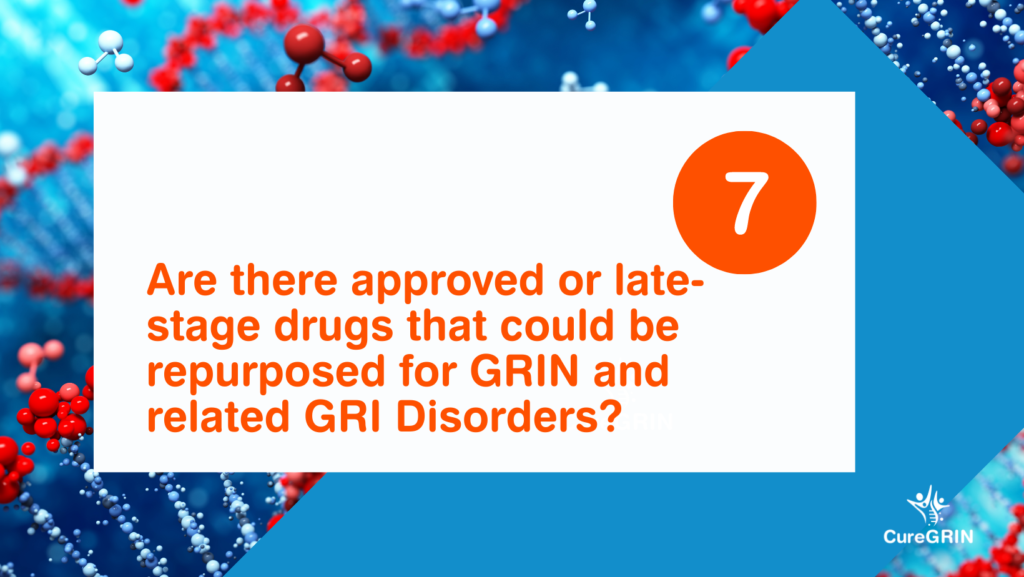Essential Question 7: Are there approved or late-stage drugs that could be repurposed for GRIN and related GRI Disorders?
Share This Post

Each Thursday throughout the summer, CureGRIN will be sharing a blog post that summarizes one of the 10 “Essential Questions” that need to be answered in order to find cures and treatments for GRIN Disorder. These questions are a central component of our recently unveiled Research Roadmap titled, “Treat the Symptoms. Cure the Disease.” You can find links to all of these blog posts here.
Today, we focus on Essential Question 7: Are there approved or late-stage drugs that could be repurposed for GRIN and related GRI Disorders?
Last week, we described our plans to research drugs and molecules that target NMDARs, AMPARs, and kainate receptors to help patients with GRIN and other GRI disorders. We discussed how different types of drugs and molecules including agonists, antagonists, PAMs, and NAMs might prove helpful for treating some patients. This week, we want to explore the idea that there could possibly be drugs out there already that might be able to help.
The U.S. Food & Drug Administration (FDA) has a very strict process for determining if drugs and molecules are safe and effective for the illness or disease that a drug is intended to treat, in order to minimize patient risk. This process requires researchers and pharmaceutical companies to conduct clinical trials and apply for approval through the Investigational New Drug (IND) application.
There are two ways that CureGRIN could possibly help in this area of the search for new treatments for GRIN and other GRI disorders.
Pharmaceutical companies have lots of drug candidates that did not previously meet the FDA’s standards and did not make it market. For example, if a medicine that was explored for a different disease but did not meet the criteria to be approved by the FDA, CureGRIN could perhaps encourage companies to explore this drug candidate for GRIN or other GRI disorders. However, we do not yet know of any such potential medicines.
CureGRIN could also partner with companies to do what’s called a high-throughput screening. A high-throughput screening is a process that can quickly scan through hundreds to thousands of molecules and compounds to help find drug targets. After a target is found, this leads to in vitro assays, where researchers in a laboratory study how the drug target works in cells, and in vivo assays, where researchers study how the drug target works in animal models (such as mice). If the drug target works well in cells and animal models, this could lead to clinical trials and potential FDA approval.
CureGRIN will partner with various researchers and pharmaceutical companies to assess all the drugs and molecules that could be available to help patients with GRIN and other GRI disorders.
Read more Posts

Rare Disease Day
Join us and #lightupforrare on Rare Disease Day, February 29! Light up in solidarity with over 300 million people living with a rare condition and share our colors.

CureGRIN Launches $250,000 Campaign
Share This Post Share on facebook Share on linkedin Share on twitter Share on email CureGRIN is looking for 100 GRIN Champions to help us
